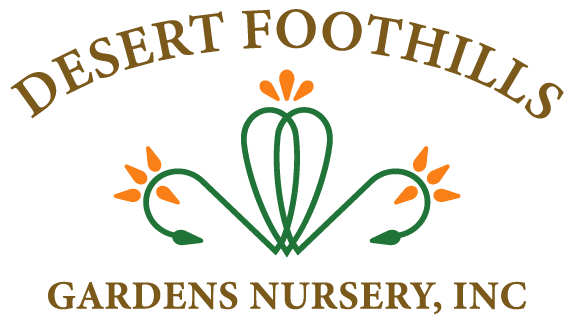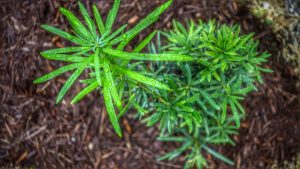Xeriscaping Costs 2024
Xeriscaping costs in Arizona can vary depending on several factors, but here’s a general breakdown to give you an idea:
-
Per Square Foot: This is a common way to estimate costs and typically ranges from $5 to $20 per square foot. A larger project will obviously cost more in total, but the price per square foot might go down slightly for bigger areas.
-
Materials: Plants, mulch, rocks, gravel, and edging all contribute to the cost. Here’s a tip: native, drought-tolerant plants are typically more expensive upfront but require less water in the long run, saving you money on your water bill.
-
Labor: Hiring a professional landscaper will add to the cost, but they can design and install a water-efficient xeriscape that meets your needs and budget. Expect to pay $50 to $100 per hour for landscaping services.
-
Additional Features: If you want fancy stuff like irrigation systems, lighting, or pathways, that will also increase the cost.
Here are some average costs to give you a ballpark figure:
- 500 sq ft: $2,500 – $10,000
- 1,000 sq ft: $5,000 – $20,000
- 1,500 sq ft: $7,500 – $30,000
Saving on Xeriscaping:
- DIY some work: If you’re handy, you can save money by removing old plants and installing mulch yourself.
- Choose low-cost materials: Look for native plants readily available in your area and consider recycled materials like rocks and gravel.
- Get multiple quotes: Compare prices from several landscapers before making a decision.
- Rebates: Many cities and water districts in Arizona offer rebates for xeriscaping. Check with your local government to see if you qualify.
Best Materials For Xeriscaping
The best materials for xeriscaping will depend on a number of factors, including your climate, soil conditions, and desired aesthetics. However, some general principles apply to all xeriscapes:
-
Drought-tolerant plants: These are plants that have adapted to survive with little water. They typically have deep root systems that can access water stored deep in the soil, and leaves that are coated with a waxy layer to help retain moisture. Some examples of drought-tolerant plants that are popular in xeriscapes include cacti, succulents, ornamental grasses, and native wildflowers.
- Mulch: Mulch is a layer of material that is applied to the surface of the soil. It helps to conserve water by reducing evaporation, suppress weeds, and regulate soil temperature. Organic mulches, such as wood chips or bark, also decompose over time and add nutrients to the soil. Inorganic mulches, such as gravel or rocks, are less likely to decompose and may reflect heat back up onto the soil, so they may not be the best choice for all climates.
-
Rocks and gravel: Rocks and gravel can be used to create paths, patios, and other hardscape features in a xeriscape. They also help to conserve water by reducing the amount of soil that needs to be irrigated. However, it’s important to choose rocks and gravel in light colors, as dark-colored rocks can absorb heat and make the surrounding area hotter.
Here are some additional tips for choosing materials for your xeriscape:
- Consider the size and scale of your yard. When choosing plants, rocks, and other materials, be sure to consider the size of your yard. Large plants and rocks can overwhelm a small space, while small plants and rocks may be lost in a large space.
- Think about your maintenance needs. Xeriscapes are designed to be low-maintenance, but there will still be some maintenance required. Choose plants that are relatively easy to care for and that don’t require a lot of water.
- Don’t forget about aesthetics. Your xeriscape should be both beautiful and functional. Choose plants, rocks, and other materials that you find appealing and that complement the style of your home.
If you are interested in increasing the beauty of your landscape by buying desert plants, stop by our convenient location at 33840 N. Cave Creek Rd., in Cave Creek. For customers interested in our landscaping services, give us a call at (480) 488-9455 to schedule a visit to your home.
More Articles About Xeriscaping
- Tips For Growing Indoor Cactus
- Wood Chips Vs Mulch
- Desert Landscaping Ideas
- 10 Incredible Saguaro Cactus Facts
- Where To Buy Saguaro Cactus
- How To Save A Dying Cactus
- How To Bring A Dead Palm Tree Back To Life
- Landscaping Prices In Arizona
- Landscape Boulders Cost
- How To Take Care Of A Cactus In Arizona | Gardening Tips
- Desert Shrubs
- When are the Saguaro Cactus in Bloom in AZ?
- Mulch vs Compost | Differences
- Garden Soil Vs. Potting Mix | Differences
- What Type Of Water Fountain Should I Buy?
- What is Xeriscape?
- The Benefits of Ground Covering Plants
- Desert Plants
- Common Desert Plants Found in Arizona
- Garden Water Fountains
- Types of Cactus
- Different Types of Water Fountains for Your Garden
- Desert Landscaping Phoenix
- Sonoran Desert Landscape Rocks
- Arizona Xeriscape Gardening






